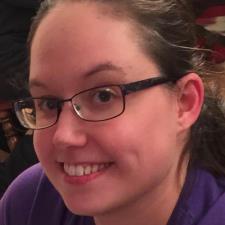"Slips of paper marked with the numbers 1, 2, 3, and 4 are placed in a box. A slip is drawn and set aside, its number is recorded, and then a second slip is drawn. Write a sample space with equally likely outcomes for this experiment."
First, read and re-read the problem until you understand it and can put it into your own words:
"Slips of paper marked with the numbers 1, 2, 3, and 4 are placed in a box."
A box has 4 slips of paper numbered 1, 2, 3, and 4.
"A slip is drawn and set aside, its number is recorded, and then a second slip is drawn."
Draw two slips of paper (without replacement) and record the results (in order).
"Write a sample space with equally likely outcomes for this experiment."
List all the possible outcomes that could be recorded.
The Statistics/math
There are 4*3=12 possible outcomes for this experiment (equally-likely). Enumerated like a counter, they are:
1 2
1 3
1 4
2 1
2 3
2 4
3 1
3 2
3 4
4 1
4 2
4 3
Now, when conducting this experiment, you will no longer have to write two numbers for each event (drawing 2 slips of paper), but you can simply count the results in the appropriate row/column on a worksheet:
Draw 1: (1,2) (1,3) (1,4) (2,1) (2,3) (2,4) (3,1) (3,2) (3,4) (4,1) (4,2) (4,3)
Draw 2: x
Draw 3: x
Draw 4: x
Draw 5: x
. . .
Draw 100: x
Draw 101: x
. . .
When the total count for each column is calculated, you have the Experimental Probability of these results. The Theoretical Probability (that is, "equally likely") means that the frequencies are all equal. As a larger and larger experiment is done, there is a probability that the experimental results with match the theoretical distribution (note: but there remains some small probability that they will not).






Andrew M.
11/07/16